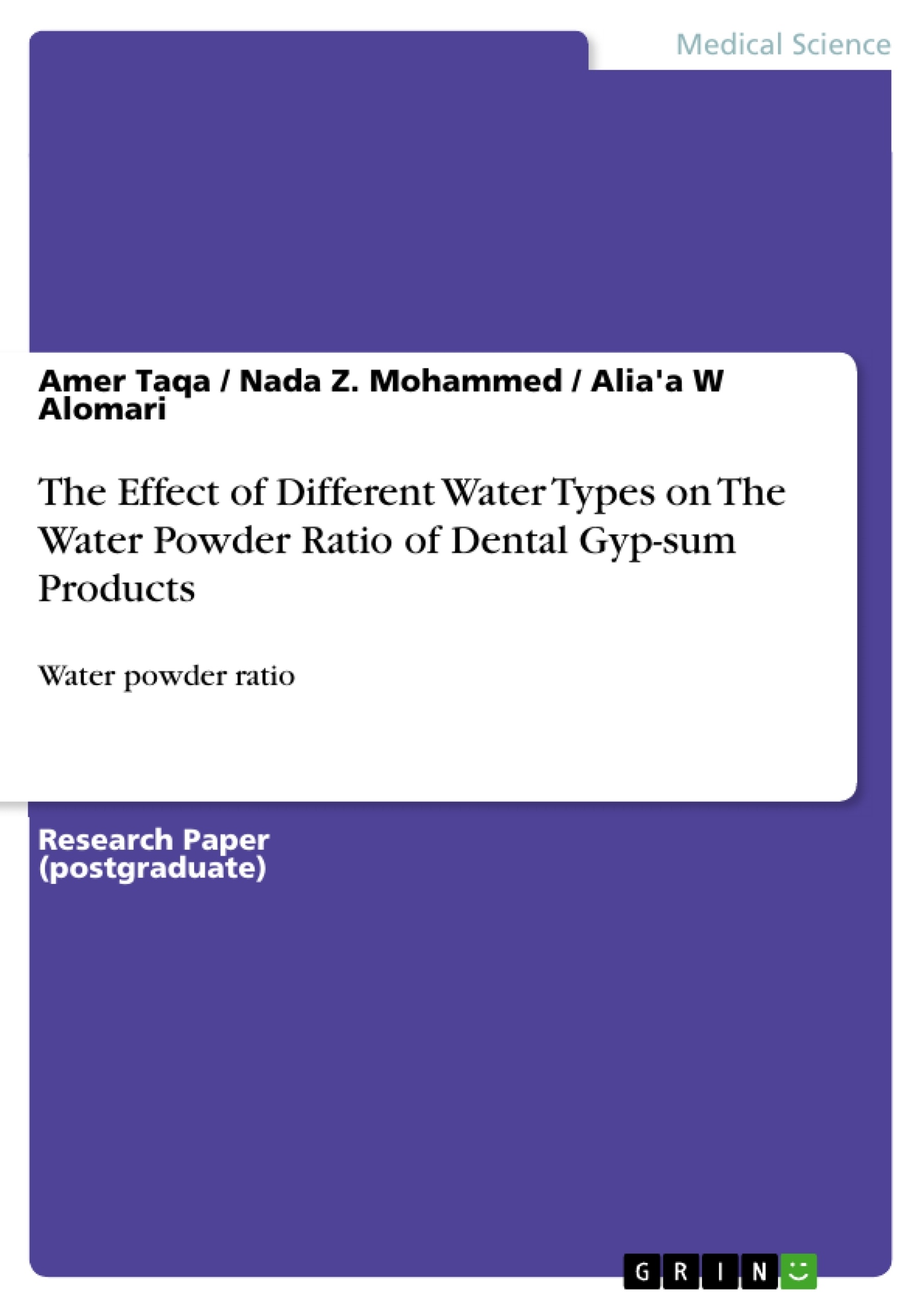Aims: To evaluate the effect of different water types on the water powder ratio of dental gypsum products. Materials and Methods: In this study five types of water (distilled, tab, slurry, de-ionized and well water) were used to be mixed with two types of dental gypsum products (plaster and stone). Results: Results showed a statistically significant difference at p ≤ 0.05 in water powder ratio of gyp-sum products when mixed with different types of water that used in this study . Conclusions: Water requirement of gypsum product varies in respect to the type of water used to be mixed with. The most pronounce decrease in water requirement of dental gypsum products was achieved with slurry water.
Table of Contents
- ABSTRACT
- INTRODUCTION
- MATERIALS AND METHODS
- 1: Materials:
- 2: Methods:
- RESULTS
- DISCUSSION
- CONCLUSIONS
- REFERENCES
Objectives and Key Themes
This study aimed to investigate the influence of different water types on the water-powder ratio of dental gypsum products. The study examined how the water requirement of gypsum products varied depending on the type of water used for mixing.
- Impact of Water Type on Gypsum Products
- Water Powder Ratio in Dental Gypsum
- Crystallization Theory and Gypsum Properties
- Effects of Water Hardness on Gypsum
- Comparison of Different Water Types
Chapter Summaries
The introduction highlights the importance of gypsum materials in dentistry due to their ease of use and versatility. It emphasizes the crucial role of the water-powder ratio in determining the quality of gypsum products.
The materials and methods section details the five types of water used in the study (distilled, tap, slurry, de-ionized, and well water) and the two types of dental gypsum products (plaster and stone). The methodology outlines the water analysis conducted and the standardized procedures for preparing test specimens, including the mixing procedure, mechanical mixer, and modified Vicat apparatus used to measure the water-powder ratio.
The results section presents the mean and standard deviation of the water-powder ratio for each gypsum product mixed with different water types. It also reveals the statistically significant differences in water requirement observed across the various gypsum products and water types, supported by one-way ANOVA analysis and Duncan multiple comparison range test.
The discussion section explores the relationship between water type, water powder ratio, and the properties of dental gypsum, drawing upon the crystallization theory and the chemical composition of the different water types. It examines the mechanisms behind the observed variations in water requirement, considering factors like the presence of ions in the water and the solubility of calcium carbonate.
The conclusions section summarizes the study's findings, emphasizing the significant impact of water type on the water-powder ratio of dental gypsum products. It highlights the most pronounced decrease in water powder ratio achieved with slurry water.
Keywords
This research focuses on the effects of different water types on the water-powder ratio of dental gypsum products. Key terms include water types, water powder ratio, dental gypsum products, crystallization theory, and water hardness.
- Quote paper
- Amer Taqa (Author), Nada Z. Mohammed (Author), Alia'a W Alomari (Author), 2010, The Effect of Different Water Types on The Water Powder Ratio of Dental Gyp-sum Products, Munich, GRIN Verlag, https://www.grin.com/document/209000



